Guinea-Bissau
Discover Guinea-Bissau
Guinea-Bissau, a small West African country, is known for its rich cultural heritage, diverse ethnic groups, and vibrant music and dance traditions. The country boasts a fascinating mix of Portuguese and African influences, which is evident in its language, cuisine, and architecture.
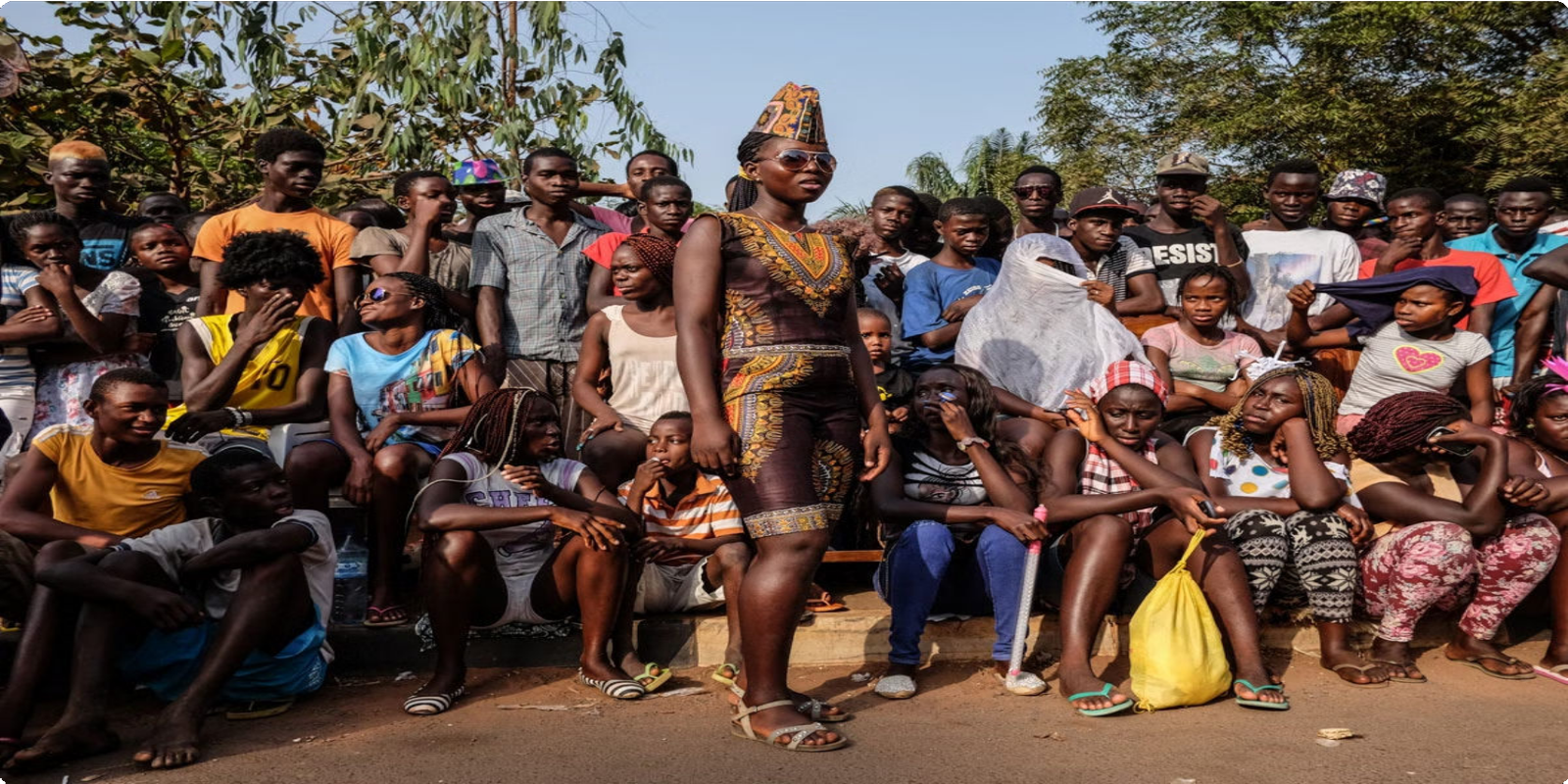
The stunning natural beauty of Guinea-Bissau, with its lush forests, pristine beaches, and tranquil river deltas, makes it an enchanting destination for travelers seeking off-the-beaten-path adventures. The traditional music and dance performances, along with the warm hospitality of the locals, create a truly immersive experience for visitors.
Flag of Guinea-Bissau
The flag of Guinea-Bissau consists of two horizontal stripes of green and yellow, with a vertical red stripe on the left side. The green color represents the lush vegetation and agriculture of the country, while the yellow symbolizes the mineral wealth and the sun. The red stands for the struggle for independence and the blood shed by the people. In the center of the flag is a black star, which represents African unity and a connection to the Pan-African movement. The design of the flag is rich in symbolism and reflects the history and aspirations of the nation.

Map of Guinea-Bissau
Guinea-Bissau, a small West African country, is known for its stunning natural beauty and rich cultural heritage. The map of Guinea-Bissau showcases its unique location along the Atlantic Ocean, with a coastline that forms intricate patterns and a network of rivers, including the Geba and the Corubal.
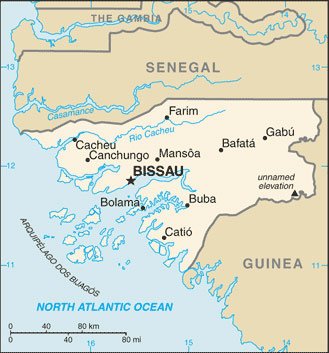
The country’s diverse landscapes, from mangrove swamps to savannahs, can be observed on the map, offering tourists and travelers an array of breathtaking vistas and ecological diversity.
Currency of Guinea-Bissau
The currency of Guinea-Bissau is the West African CFA franc (XOF), which is also used by seven other countries in West Africa. The franc is divided into smaller units called centimes. It is pegged to the euro at a fixed exchange rate, providing stability in international trade and financial transactions. The currency is issued by the Central Bank of West African States (BCEAO), ensuring monetary control and stability within the region.
The use of the West African CFA franc simplifies monetary processes and transactions for visitors traveling to Guinea-Bissau. While local markets and smaller businesses may also accept bartering and trading of goods, the official currency plays a crucial role in economic activities and financial transactions.
Economy of Guinea-Bissau
Primary Industries: Guinea-Bissau’s economy is primarily based on agriculture, with cashew nuts being the dominant export. Other key industries include fishing, forestry, and the fledgling tourism sector.
Challenges: The economy faces challenges due to political instability, weak infrastructure, and the impact of climate change. Additionally, the country struggles with external debt and dependence on foreign aid.
Trade Partners: Guinea-Bissau engages in trade with partners such as India, Portugal, and Senegal. The European Union is a significant trade partner, and the country benefits from the Everything But Arms initiative.
Culture of Guinea-Bissau
The culture of Guinea-Bissau is a vibrant and diverse tapestry woven by the various ethnic groups that call the country home. With over 20 ethnic groups, each with their own unique traditions and customs, the cultural landscape of Guinea-Bissau is rich and multifaceted. Traditional music, dance, and art play a significant role in the daily lives of the people, reflecting their rich heritage and history.
The country’s cuisine is an integral part of its culture, featuring dishes that blend local ingredients with influences from Portuguese, African, and indigenous culinary traditions. The people of Guinea-Bissau also celebrate a variety of festivals and events, showcasing their vibrant colors, music, and dances.
Religion and spirituality also hold a prominent place in the culture of Guinea-Bissau, with both Islam and indigenous African beliefs coexisting harmoniously. The lively markets, where artisans and traders display their goods, offer a glimpse into the everyday life and traditions of the people.
Artisanal crafts, such as weaving, pottery, and wood carving, demonstrate the skill and creativity of the local artisans. The culture of Guinea-Bissau is a captivating fusion of tradition and modernity, contributing to the country’s rich tapestry of diversity.
Traditional Dances in Guinea-Bissau
Vibrant Costumes and Rhythmic Movements
The traditional dances of Guinea-Bissau are known for their vibrant costumes and rhythmic movements that tell the stories of the country’s rich cultural heritage. Dancers adorned in colorful attire move gracefully, expressing emotions and narratives through their captivating performances.

Celebration of Ancestral Traditions
Each dance carries deep-rooted significance, celebrating the ancestral traditions, rituals, and historical events of the diverse ethnic groups in Guinea-Bissau. The movements and rhythms are a reflection of the cultural pride and unity of the nation.
Rhythmic Beats and Traditional Instruments
The traditional dances are accompanied by rhythmic beats and lively music, often featuring traditional instruments such as drums, balafon, and kora. The fusion of movement and music creates a mesmerizing and immersive experience for both performers and spectators.
Popular foods in Guinea-Bissau
Caldo de Mancarra: A traditional peanut-based stew made with fish, chicken, or beef, commonly enjoyed with rice and cassava. The rich, creamy texture and nutty flavor make it a beloved dish in Guinea-Bissau.
Jollof Rice: A flavorful rice dish cooked with tomatoes, onions, and a mix of spices, often accompanied by grilled or fried fish. The aromatic combination of ingredients creates a fragrant and satisfying meal.
Caril de Galinha: A delicious chicken curry infused with local spices and coconut milk, offering a balance of savory and subtly sweet flavors. It is usually served with rice or couscous, creating a comforting and hearty meal.
Famous Celebrities from Guinea-Bissau
Eddi Gomes
Eddi Gomes is a renowned actor from Guinea-Bissau known for his versatile performances in both theater and film. He has garnered international acclaim for his compelling portrayals and has been instrumental in bringing attention to the country’s entertainment industry.
Nene Zola
Nene Zola is a celebrated singer and songwriter from Guinea-Bissau. Her soulful voice and powerful lyrics have resonated with audiences globally, earning her a spot among the top musical talents from the region.
Elsa Almeida
Elsa Almeida is an accomplished athlete who has made significant strides in the world of sports, representing Guinea-Bissau on the international stage. Her dedication to her craft has inspired many aspiring athletes within the country.
Mario de Andrade
Mario de Andrade is a prolific author and literary figure hailing from Guinea-Bissau. His literary works have captured the essence of the nation’s culture and history, earning him recognition as a literary icon.
Best cities to visit in Guinea-Bissau
Bissau: The capital city of Guinea-Bissau, Bissau, offers a blend of rich history and vibrant modern culture. Explore the old colonial buildings, bustling markets, and lively nightlife.
Bafatá: Known for its laid-back atmosphere and friendly locals, Bafatá is a great city to experience the traditional way of life in Guinea-Bissau. Visit the local artisan markets and enjoy the serene surroundings.
Canchungo: This picturesque city is surrounded by lush greenery and offers a peaceful retreat for nature enthusiasts. Explore the beautiful landscapes and enjoy the tranquility of Canchungo.
Top Tourist Attractions in Guinea-Bissau
Bijagos Islands
The Bijagos Islands are a stunning archipelago off the coast of Guinea-Bissau, known for their pristine beaches, rich biodiversity, and vibrant local culture. Visitors can explore lush mangrove forests, observe rare bird species, and experience the traditional customs of the Bijagos people.
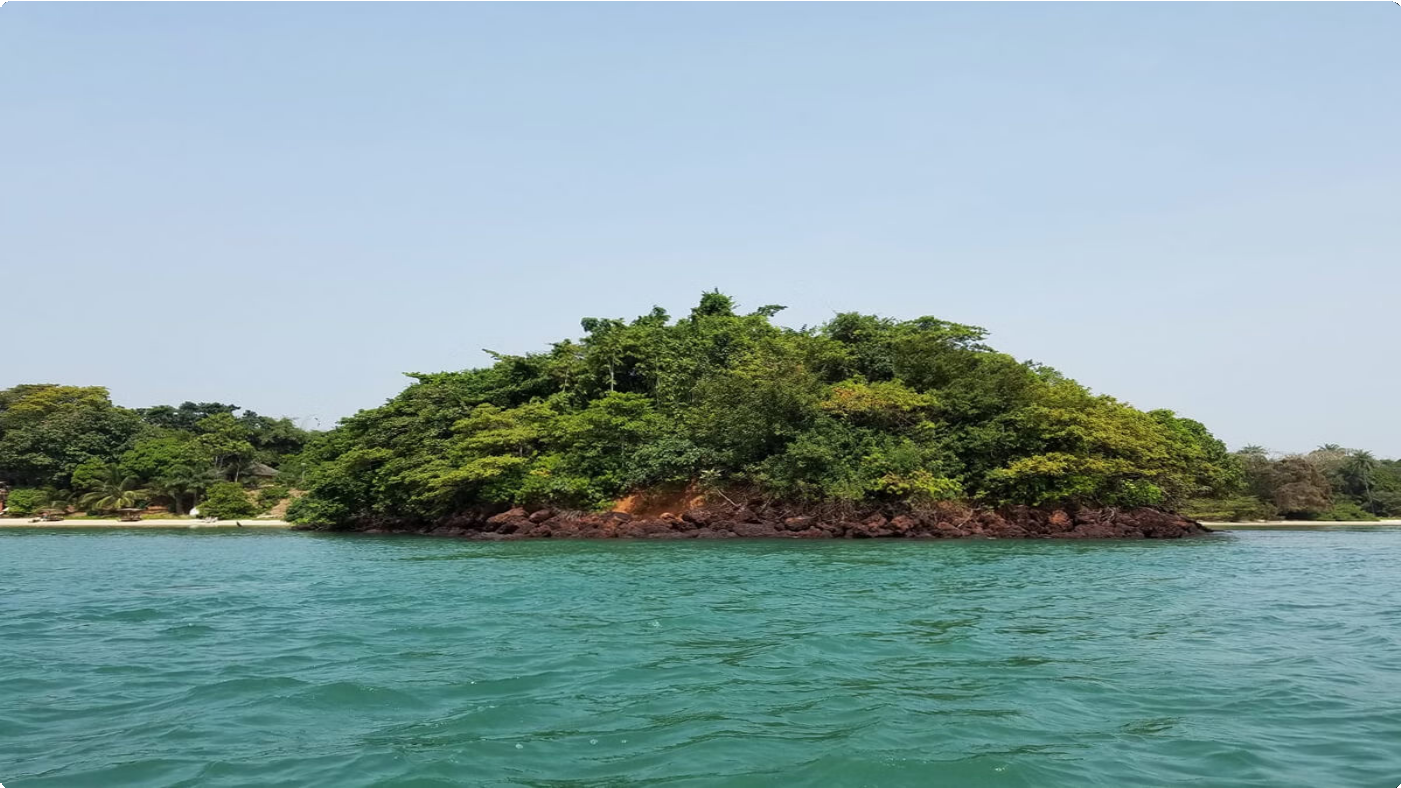
Fortaleza de Sao Jose da Amura
This historic fort, located in Bissau, is a remarkable example of colonial architecture and offers panoramic views of the city and the Geba River. The fort has played a significant role in the region’s history and is a must-see for history enthusiasts.
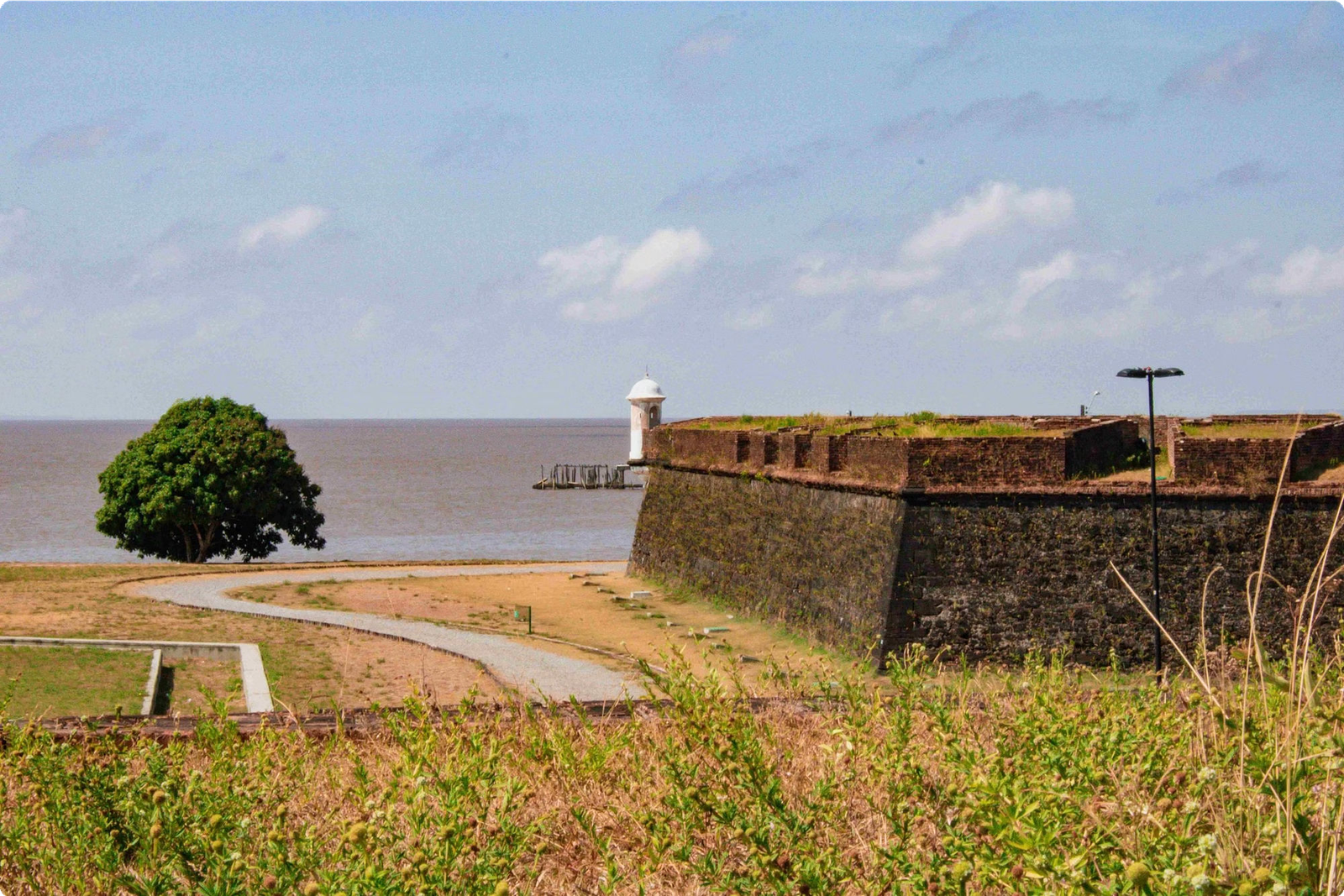
Varela Beach
Varela Beach is a picturesque stretch of coastline with golden sands and crystal-clear waters, perfect for swimming, sunbathing, and enjoying breathtaking sunsets. The tranquil atmosphere and natural beauty make it a popular destination for relaxation and rejuvenation.

Historical sites in Guinea-Bissau
Fortaleza de São José da Amura: This fortress, located in the capital city of Bissau, was built by the Portuguese in the 18th century to defend the city from attacks. It played a significant role in the colonial era and now stands as a historical landmark.
Varela: Varela is a small town with a rich history, containing ancient megaliths that date back to pre- colonial times. These megaliths, known as Patacão stones, are believed to be ancient tombs and are an important archaeological site.
Bolama: The island of Bolama served as the capital of Portuguese Guinea from 1879 to 1941. The ruins of the colonial-era buildings and structures on the island provide a glimpse into the architectural and historical legacy of the region.
Cacheu: This historic town is home to the remains of Portuguese colonial architecture, including the Cacheu Fort and the ruins of the former Governor’s Palace. It was a significant trading post during the colonial era and holds great historical value.
Natural Wonders in Guinea-Bissau
Orango Island National Park
Located off the coast of Guinea-Bissau, Orango Island National Park is a breathtaking natural wonder known for its expansive mangroves. The park is a haven for diverse bird species, including the elusive white-necked picathartes, and is home to a rich marine ecosystem, making it a paradise for nature enthusiasts and ecotourists.

Paisagem Natural da Gabu
The stunning waterfalls of Paisagem Natural da Gabu create a mesmerizing sight amidst the lush greenery of Guinea-Bissau. The cascading water and vibrant foliage provide an enchanting backdrop for hikers and photographers, offering a serene escape into the heart of the country’s natural beauty.
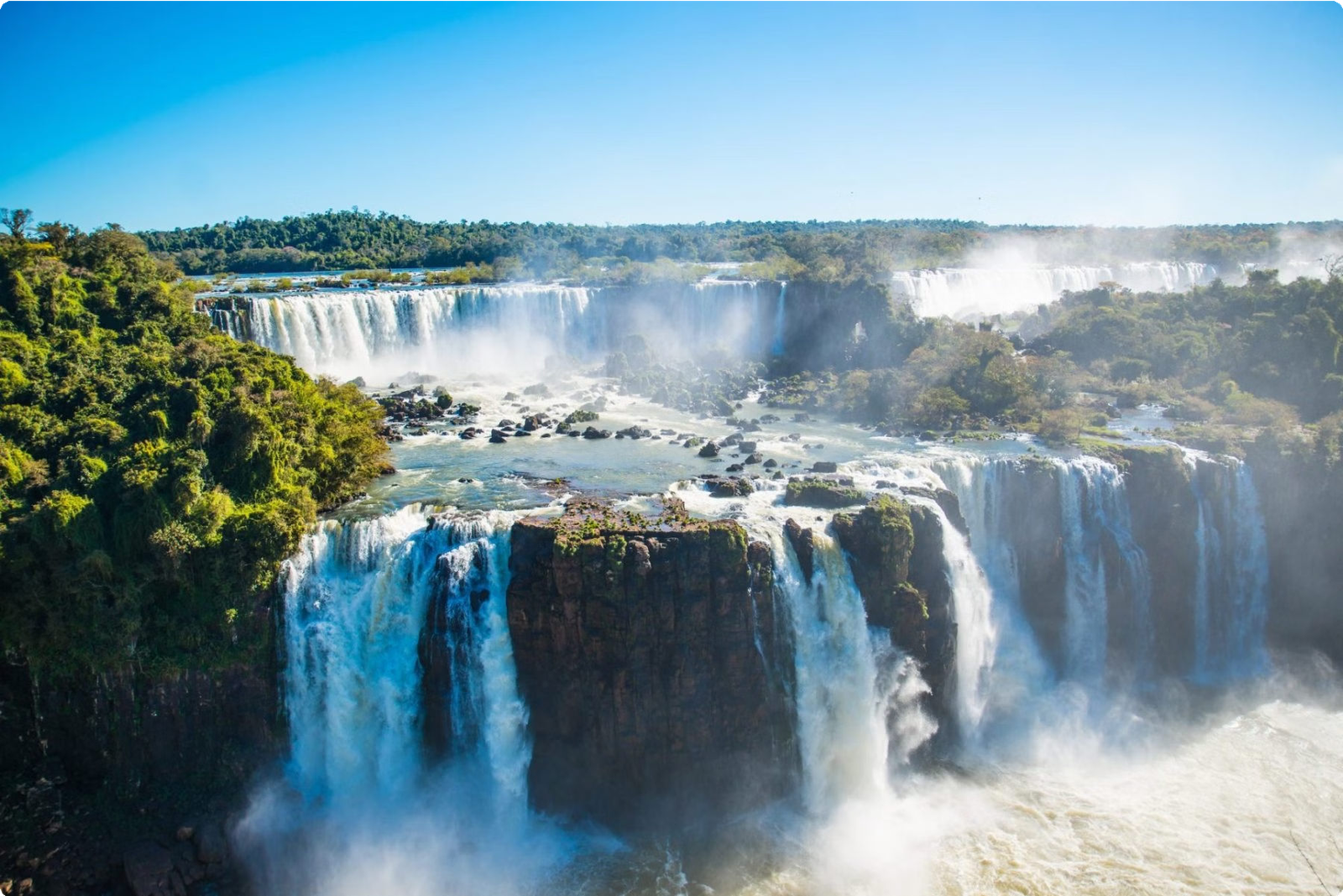
Bijagós Archipelago
The Bijagós Archipelago is a collection of idyllic tropical islands that boast pristine beaches, crystal-clear waters, and rich biodiversity. The archipelago is a UNESCO Biosphere Reserve, and its untouched landscapes and unique cultural heritage make it a true natural wonder of Guinea-Bissau.
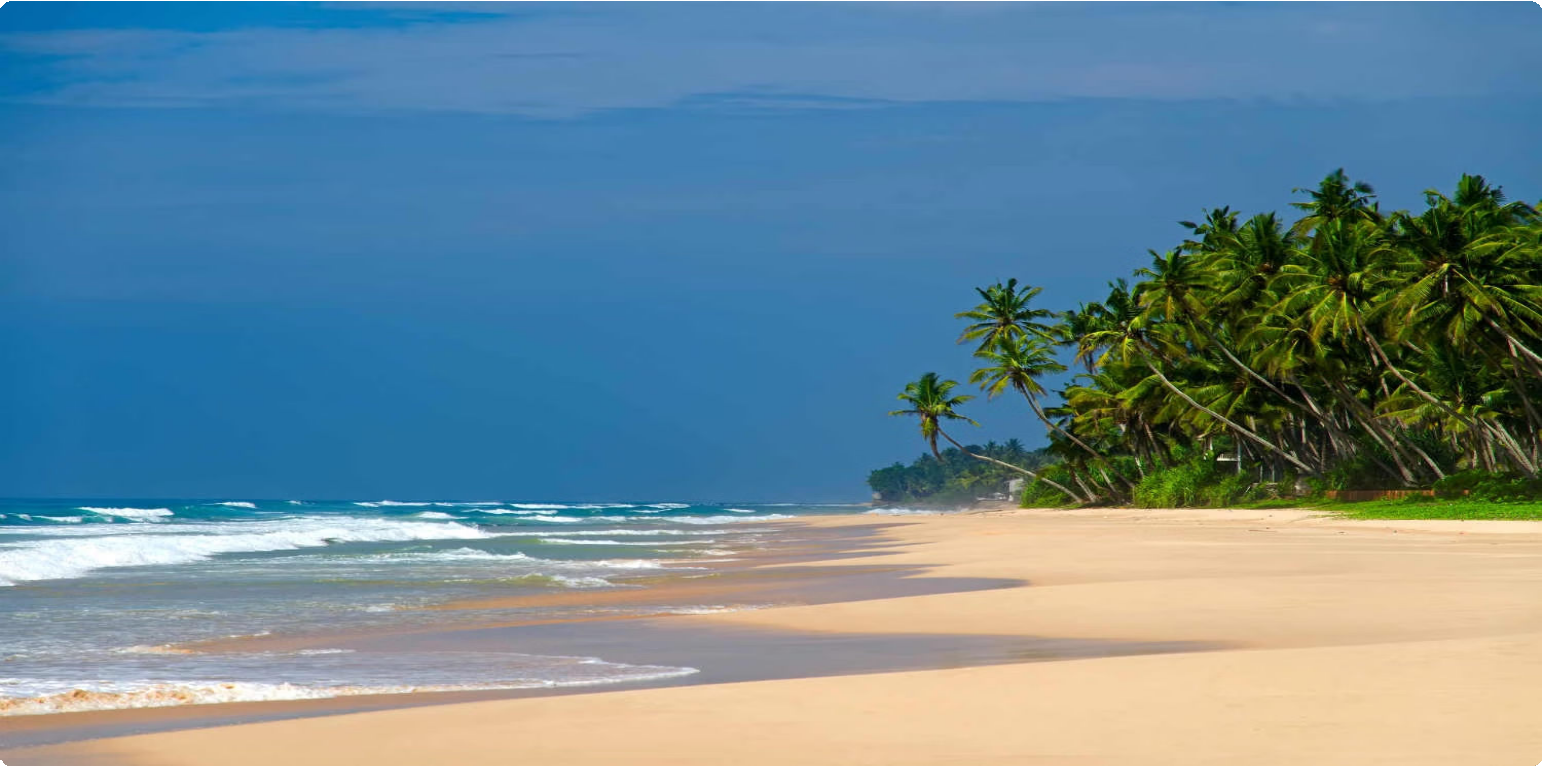
Beaches in Guinea-Bissau
Bijagos Archipelago
The Bijagos Archipelago in Guinea-Bissau is known for its stunning beaches with crystal clear waters and soft, white sand. The breathtaking sunsets create a magical atmosphere that attracts visitors from around the world. The pristine and serene beaches offer a perfect retreat for those seeking relaxation and natural beauty.

Bubaque Island
Bubaque Island boasts beautiful beaches surrounded by lush palm trees and mangroves. The calm and tranquil waters are ideal for swimming and snorkeling, allowing visitors to explore the vibrant marine life. The picturesque coastline offers a peaceful escape for beach lovers and nature enthusiasts.
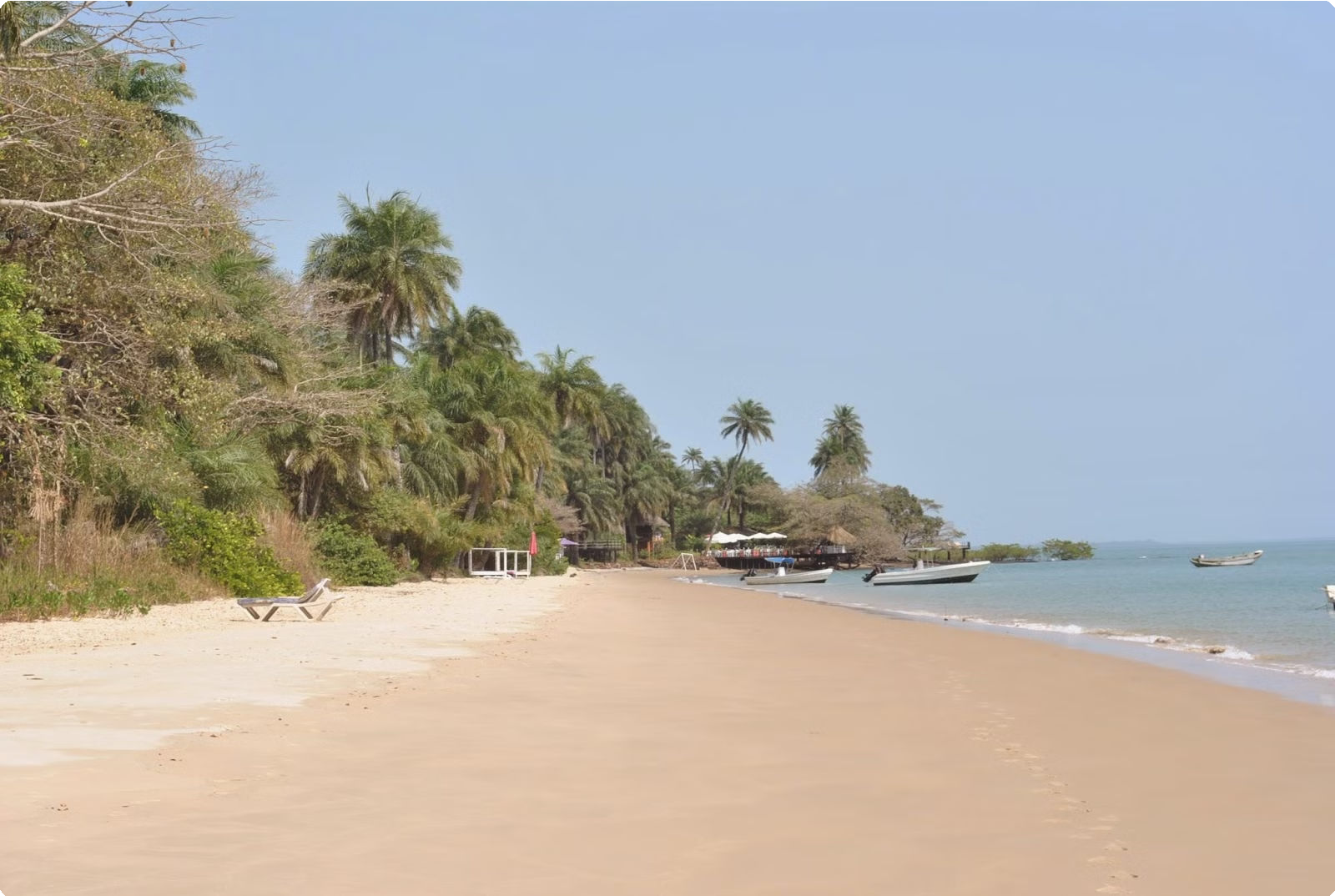
Bissagos Islands
The Bissagos Islands are home to secluded beaches that remain unspoiled and untouched. The idyllic setting and pristine sands make it a paradise for sunbathing, beachcombing, and enjoying the warm ocean breeze. The sheer beauty and tranquility of the beaches in Bissagos Islands make them a must- visit destination in Guinea-Bissau.

National Parks in Guinea-Bissau
Orango Island National Park
Orango Island National Park is a haven for biodiversity, featuring pristine mangrove forests, vibrant bird species, and marine life. Visitors can explore the diverse ecosystems, observe saltwater hippos, and witness the nesting of sea turtles along the picturesque coastline.

Cantanhez Forest National Park
Cantanhez Forest National Park is a lush sanctuary, rich in flora and fauna. The park offers opportunities for birdwatching, with over 200 species recorded, and hiking through dense tropical forest featuring rare plant species and endangered primates.
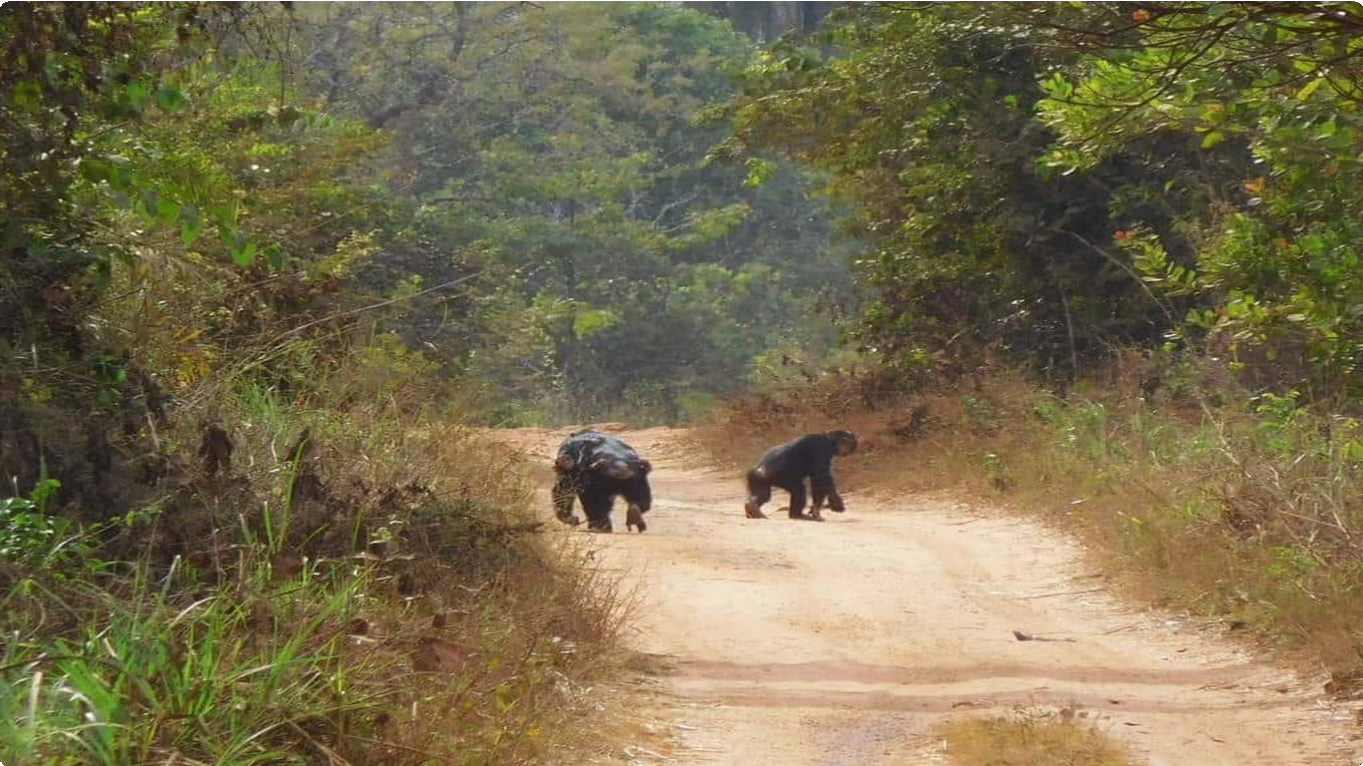
Cacheu River Mangroves
The Cacheu River Mangroves is a vital ecosystem that provides a habitat for a variety of wildlife, including manatees, monkeys, and an array of bird species. Visitors can take boat tours through the winding mangrove channels and witness the unique biodiversity of this coastal area.
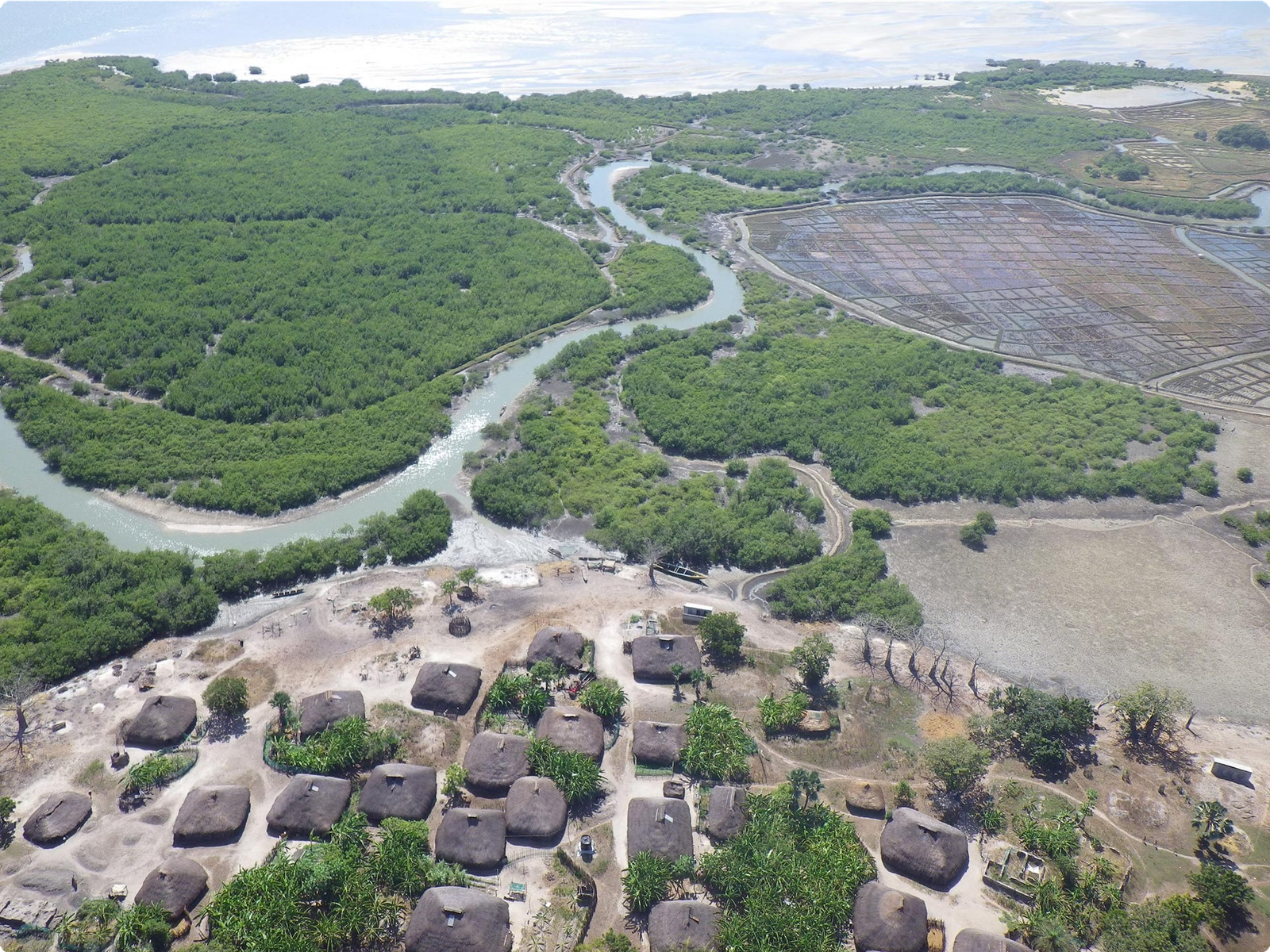
Museums in Guinea-Bissau
National Ethnographic Museum
The National Ethnographic Museum in Guinea-Bissau is a treasure trove of cultural artifacts and historical exhibits. It showcases an extensive collection of traditional tools, musical instruments, religious artifacts, and ceremonial objects, providing visitors with a deep understanding of the country’s rich cultural heritage.
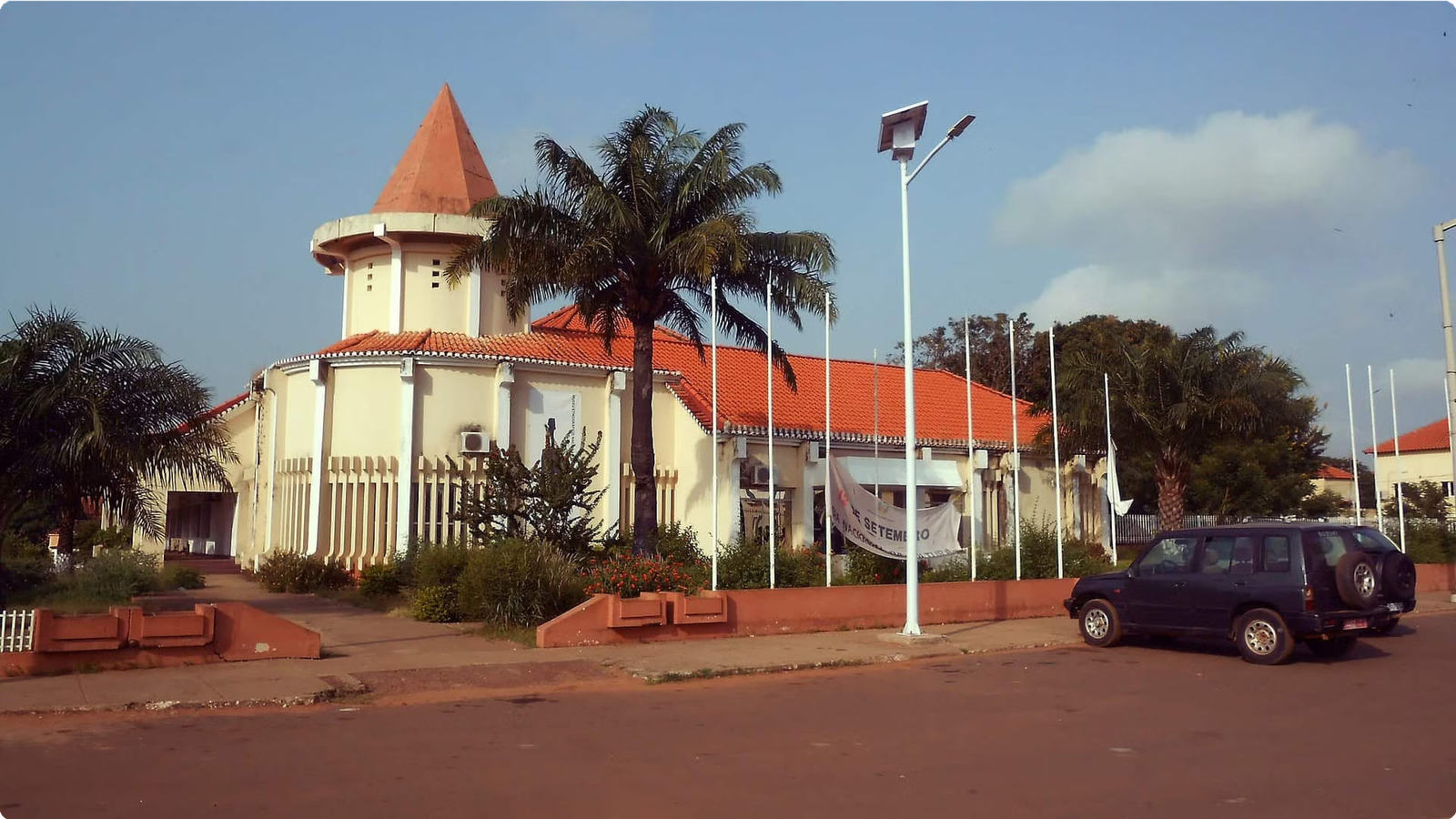
Bissau Museum of Costume and Crafts
The Bissau Museum of Costume and Crafts is dedicated to preserving and displaying the traditional clothing, textiles, and handicrafts of Guinea-Bissau. The museum offers a fascinating insight into the craftsmanship and artistic traditions of the local communities, highlighting their unique cultural identity.
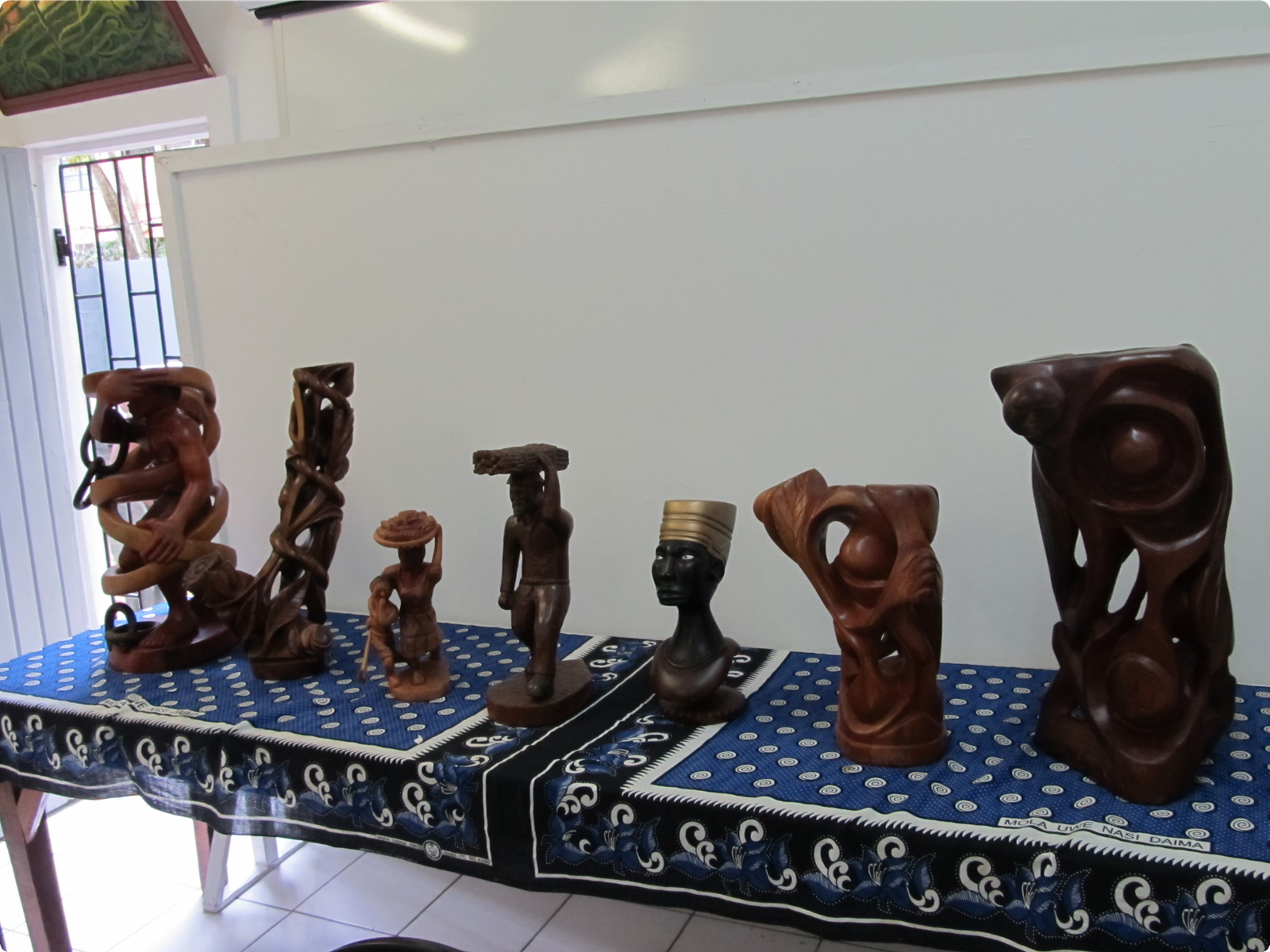
Guinea-Bissau Militaria Museum
The Guinea-Bissau Militaria Museum houses a remarkable collection of military artifacts, including weapons, uniforms, and photographs documenting the country’s military history. It provides an in-depth look into the role of the military in shaping the nation’s identity and its impact on historical events.
Markets and Shopping in Guinea-Bissau
Local Markets
The local markets in Guinea-Bissau are vibrant and filled with colorful stalls offering a variety of goods. From fresh produce to handmade crafts, these markets are a hub of activity and a great place to experience the local culture.
Traditional Textiles
Visitors to Guinea-Bissau can find beautiful traditional textiles in the markets, including intricately woven fabrics, vibrant batiks, and intricately embroidered pieces that showcase the country’s rich textile heritage. These make for unique and authentic souvenirs.
Handicrafts
Local artisans sell a wide range of handicrafts, including wooden carvings, pottery, and basketry. Each piece reflects the skill and creativity of the craftspeople, offering visitors the opportunity to take home one-of-a-kind treasures.
Exotic Spices
Exploring the markets in Guinea-Bissau provides the chance to discover a variety of exotic spices that are integral to the local cuisine. Visitors can purchase aromatic blends and unique spices to recreate the flavors of the country back home.
Festivals and Events in Guinea-Bissau
Bubaque Carnival: This vibrant and colorful festival takes place on the island of Bubaque and features lively music, traditional dance performances, and a parade with stunning floats.
Fishermen’s Feast: Celebrated in various coastal villages, this event honors the local fishing communities with feasts, music, and dance to commemorate the fishing season.
Tabanka Festival: A celebration of traditional culture, the Tabanka Festival includes drumming, singing, and rituals to celebrate the history and heritage of the Balanta people.
Bijagós Cultural Festival: This festival showcases the unique culture of the Bijagós archipelago, featuring traditional crafts, music, and ceremonies that highlight the islands’ cultural richness.
Traditional Crafts in Guinea-Bissau
Woven Baskets
Woven baskets are a significant traditional craft in Guinea-Bissau. Skilled artisans weave intricate and colorful patterns using locally sourced materials such as palm leaves and grass. These baskets are not only practical for daily use, but they also showcase the artistic expertise of the Guinean craftspeople.

Woodcarving
Woodcarving is an ancient art form in Guinea-Bissau, with artisans carving detailed sculptures and masks from indigenous woods. These carvings often depict spiritual and cultural motifs, reflecting the rich traditions and beliefs of the Guinean people.
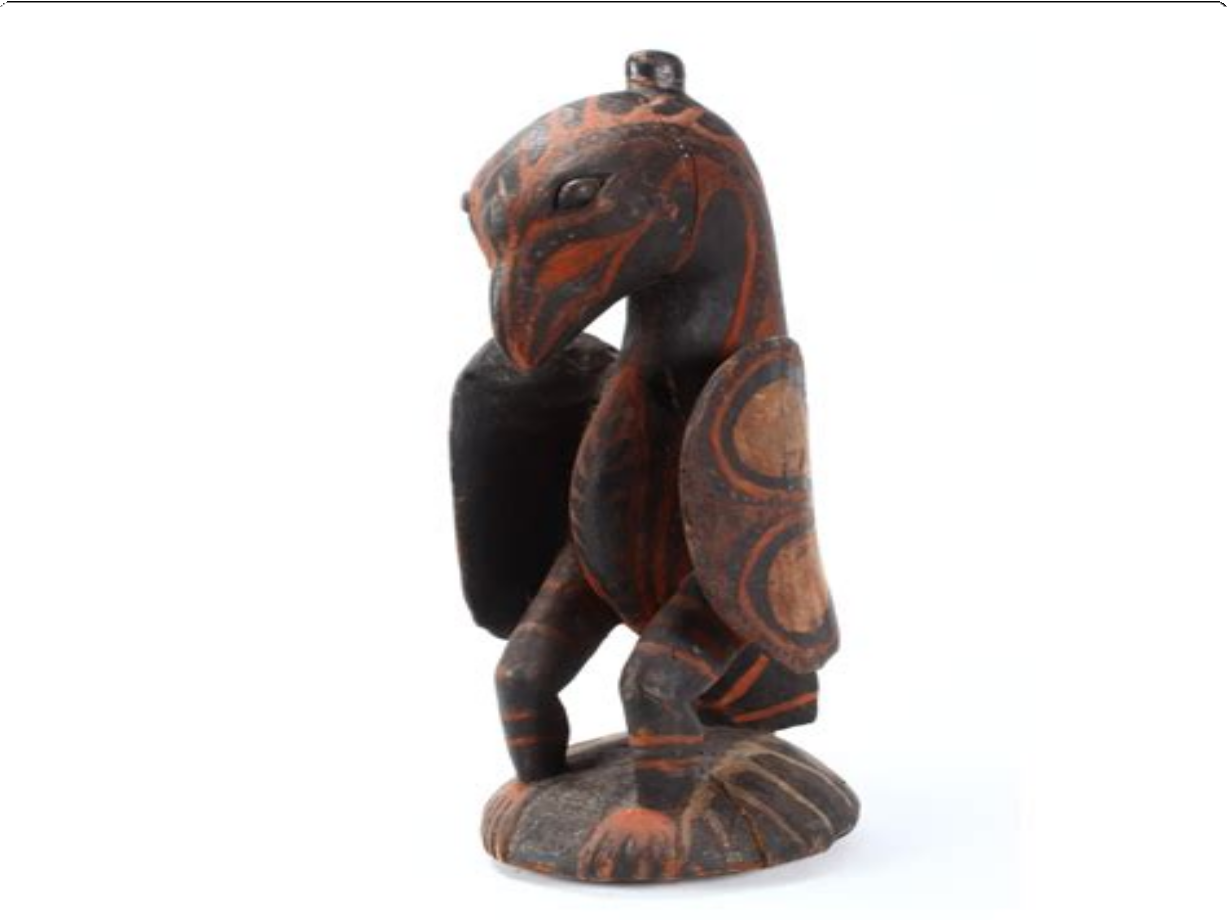
Pottery
Traditional pottery making is a cherished craft in Guinea-Bissau, with artisans handcrafting clay vessels and decorative items using age-old techniques. The pottery is often adorned with distinctive geometric designs and natural motifs, representing the cultural heritage of the Guinean people.
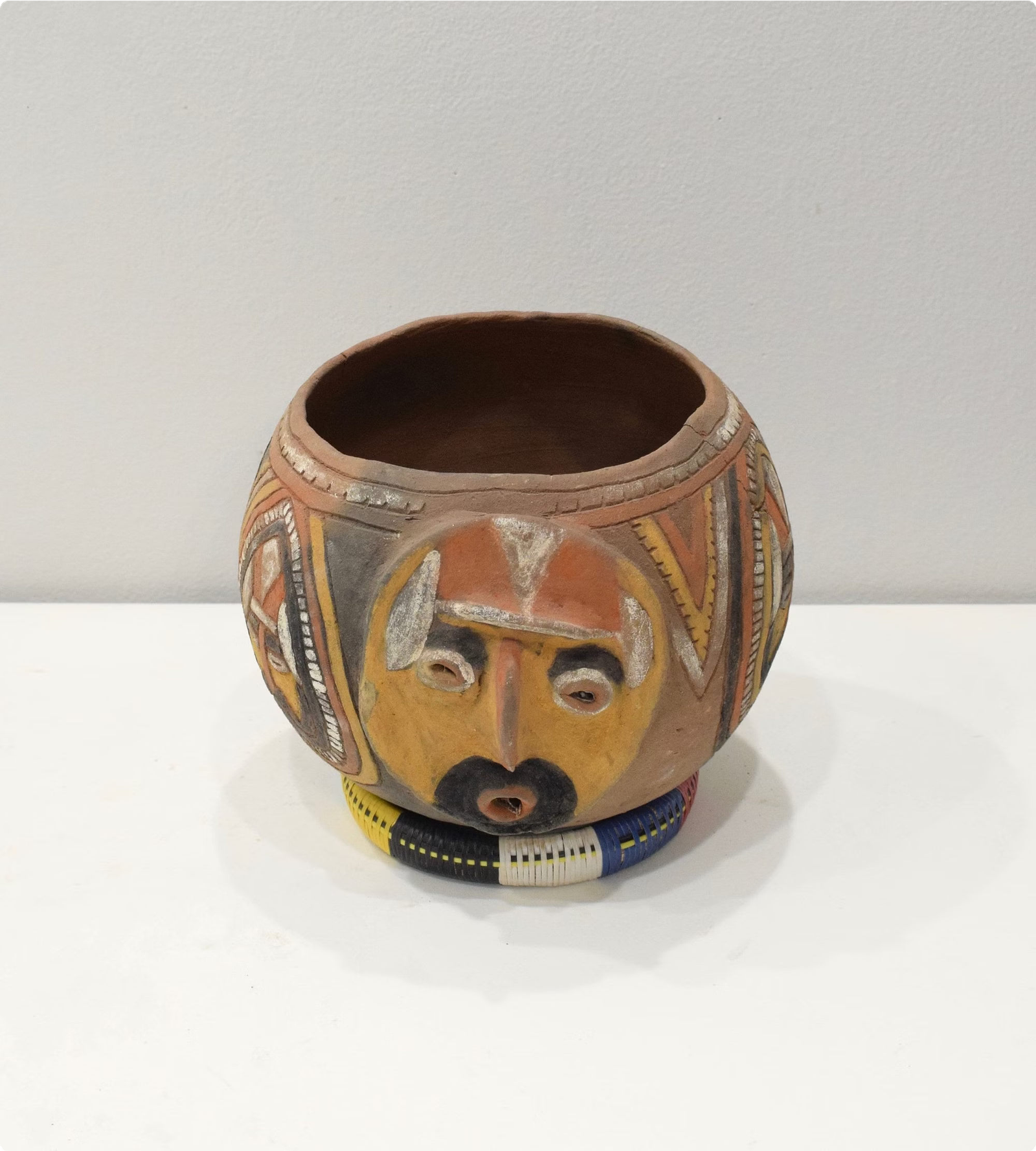
Sports in Guinea-Bissau
Soccer
Soccer, also known as football, is the most popular and widely played sport in Guinea-Bissau. It is not only a sport but also a significant part of the country’s culture. The passion for soccer runs deep, and Guinea-Bissau has a national team that competes in international tournaments.
Basketball
Basketball is gaining popularity among the youth in Guinea-Bissau. It is played both casually and competitively, with local tournaments and games organized in various communities. The sport serves as a source of recreation and community engagement.
Athletics
Athletics, including track and field events, has a growing presence in Guinea-Bissau. The country has produced talented athletes who have competed in international competitions, representing their nation with pride and skill.
Wildlife in Guinea-Bissau
River Dwelling Hippopotamus
Guinea-Bissau’s rivers are home to diverse wildlife, including the magnificent hippopotamus. These semi-aquatic giants spend much of their time submerged in water, emerging at dusk to graze on the riverbanks. Their presence is essential to the ecosystem, shaping the landscape around them and supporting a variety of other species.
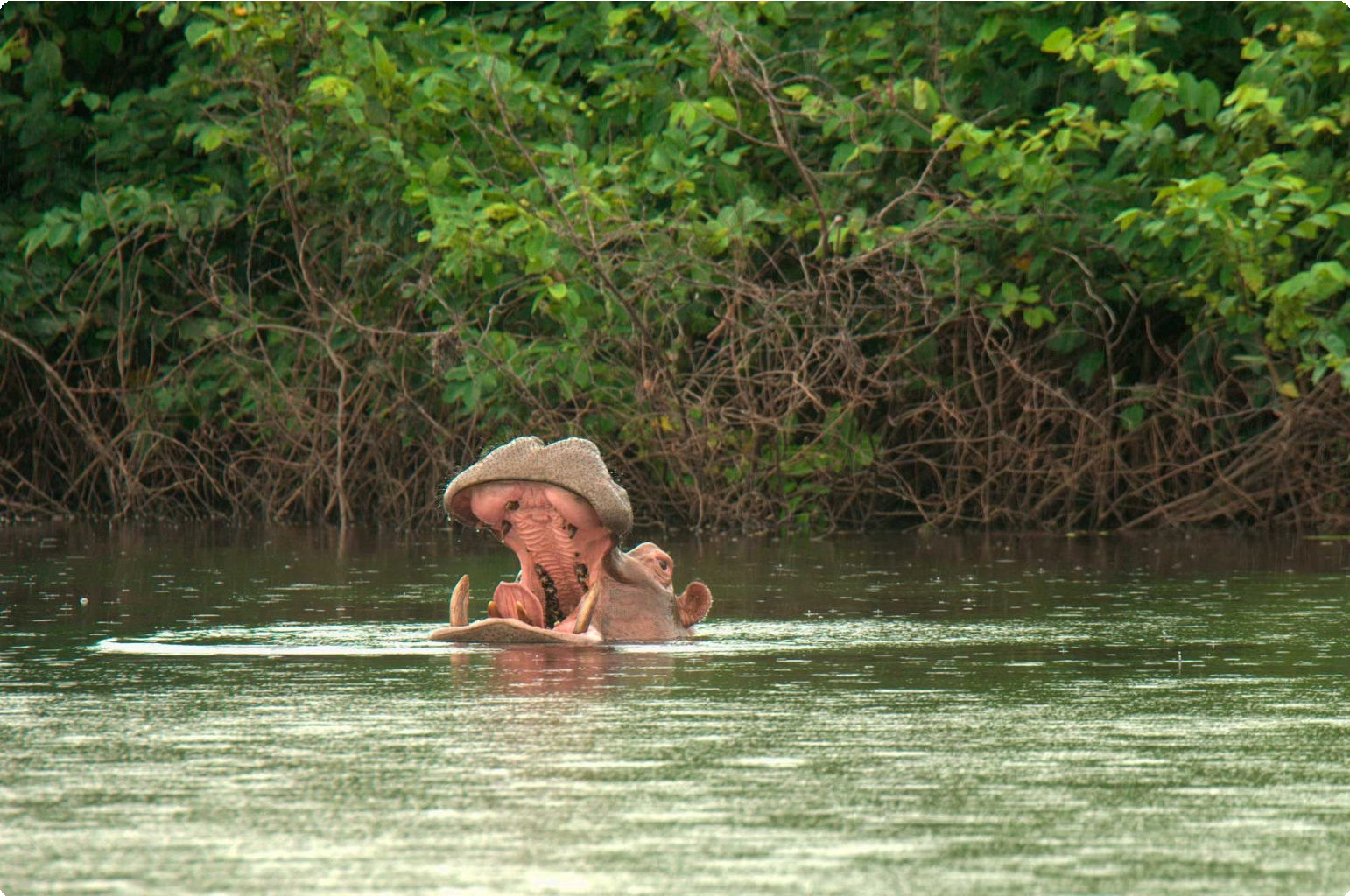
Rich Mangrove Forests
The extensive mangrove forests in Guinea-Bissau are teeming with life, from colorful birds and playful monkeys to elusive reptiles and amphibians. The unique ecosystem of mangroves supports a wealth of biodiversity, making it a crucial habitat for various species, both marine and terrestrial.
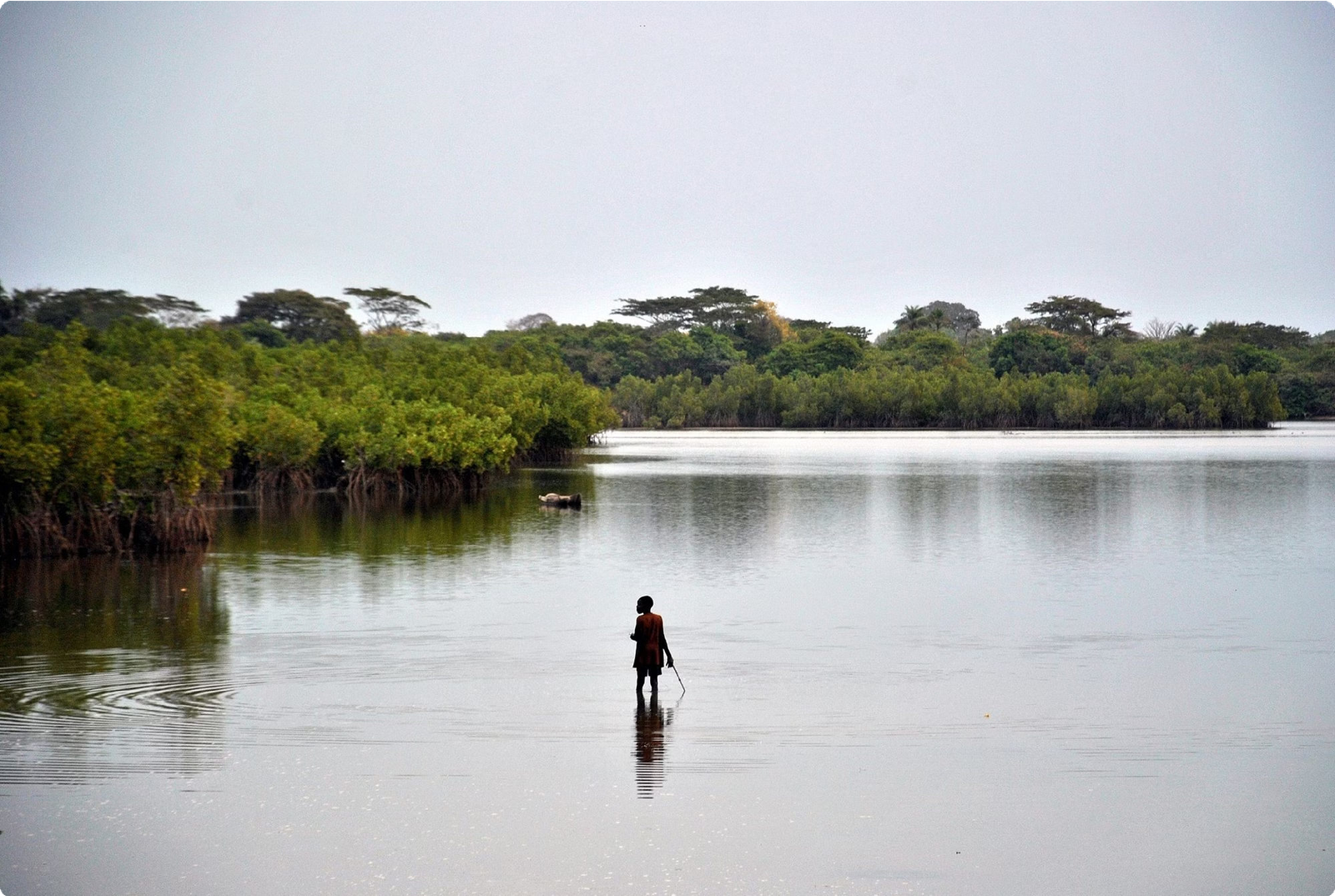
Majestic Saltwater Crocodiles
These awe-inspiring predators can be found in the coastal regions of Guinea-Bissau, blending seamlessly into their natural surroundings. Saltwater crocodiles are apex predators, playing a vital role in regulating the balance of the local ecosystem while captivating observers with their ancient and powerful presence.
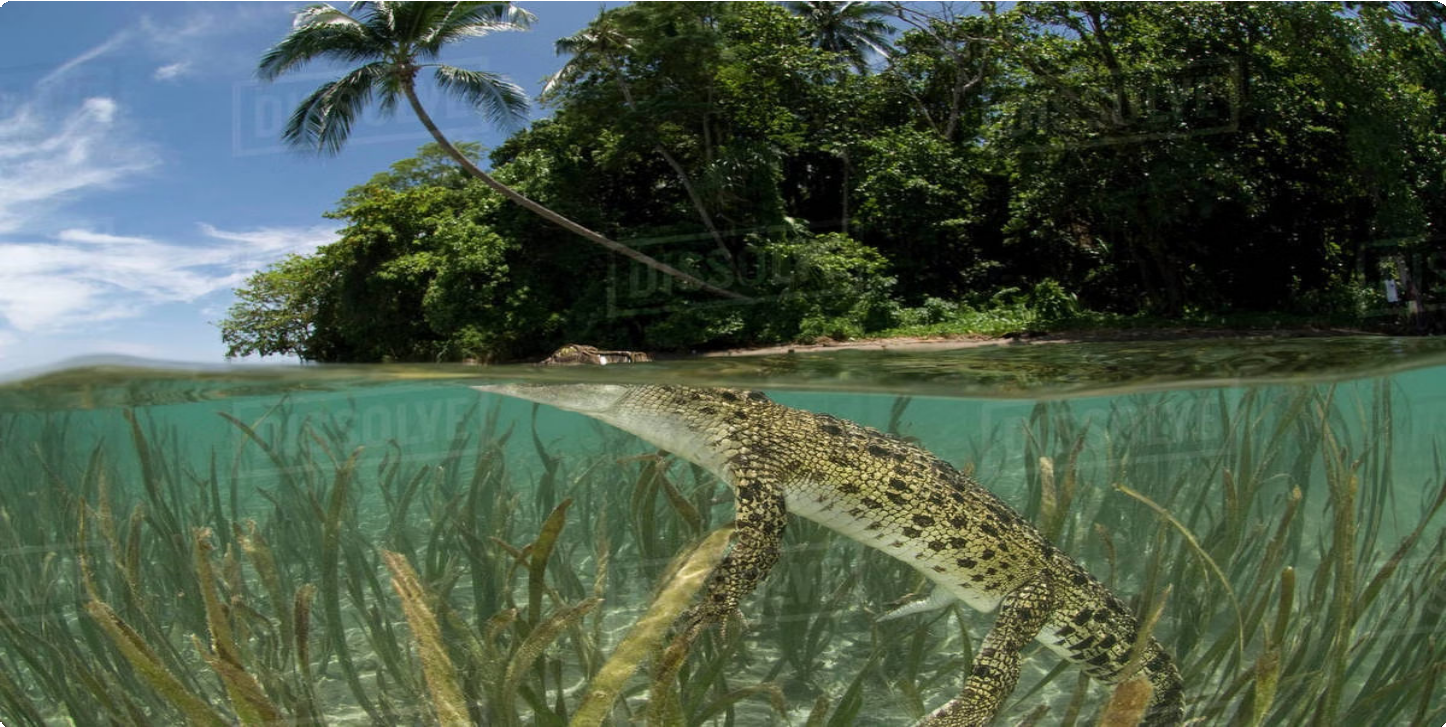
Climate and Weather in Guinea-Bissau
The climate of Guinea-Bissau is characterized by a tropical savanna climate, with a wet season and a dry season. The wet season typically lasts from June to October, bringing heavy rainfall and high humidity.
During this time, the landscape flourishes with lush vegetation, making it a scenic time to visit the country. The dry season, from November to May, experiences cooler temperatures and less rainfall, making it an ideal time for outdoor activities and exploring the natural beauty of Guinea-Bissau.
The average temperature in Guinea-Bissau ranges between 25°C to 30°C throughout the year, providing a warm and inviting environment for travelers. The coastal areas offer refreshing sea breezes, while the inland regions showcase diverse terrain, including mangrove forests and open savannas.
The country is also known for its stunning sunsets, with vibrant colors painting the skies as the day comes to an end. This natural spectacle is a must-see for visitors and a highlight of the picturesque scenery that Guinea-Bissau has to offer.
Transportation in Guinea-Bissau
Roads: The road network in Guinea-Bissau is primarily concentrated around the capital, Bissau. The main highways are paved, but in rural areas, the roads may be unpaved and rough, requiring a 4×4 vehicle for some areas.
Public Transport: Minibuses and shared taxis, known as “car rapido,” are a common mode of transport within cities and towns. They offer an affordable way to travel short distances.
Waterways: The Geba and Corubal rivers are important transport routes, and boats and canoes are commonly used for transportation in rural areas and islands.
Air Travel: Bissau Osvaldo Vieira International Airport is the main airport in the country, serving international and domestic flights. In addition to commercial flights, there are also bush airstrips in remote areas.
Accommodation Options in Guinea-Bissau
Luxury Hotels
Guinea-Bissau offers a selection of luxury hotels that provide world-class amenities, including luxurious suites, spa facilities, fine dining restaurants, and breathtaking views of the coastline.
Eco-resorts
For travelers seeking a more sustainable and nature-oriented experience, eco-resorts in Guinea-Bissau offer eco-friendly accommodations, organic dining options, and opportunities to engage with local wildlife and ecosystems.
Beachfront Villas
Experience the ultimate beach getaway by staying in a beachfront villa in Guinea-Bissau. These accommodations offer direct access to pristine beaches, private pools, and personalized services for a relaxing and indulgent retreat.
Travel tips for Guinea-Bissau
Visa Requirements: Travelers to Guinea-Bissau should check visa requirements well in advance, as they may vary based on nationality. It’s advisable to obtain a visa before arriving in the country.
Health Precautions: Ensure you have the necessary vaccinations and carry mosquito repellent. Medical facilities may be limited in some areas, so it’s essential to have travel insurance and a basic medical kit.
Cultural Considerations: Respect the local culture and customs. Dress modestly, especially outside urban areas, and ask for permission before taking photos of people or their belongings.
Language: While Portuguese is the official language, many local dialects are spoken. Learning a few basic phrases in Creole can go a long way in connecting with the locals.
Transportation: Use reputable transportation services and agree on fares beforehand. Be cautious when driving, as road conditions in some areas may be challenging.
Money Matters: Cash is king in Guinea-Bissau, so it’s essential to carry enough local currency. Credit cards are accepted in a few establishments, but it’s best to rely on cash for most transactions.